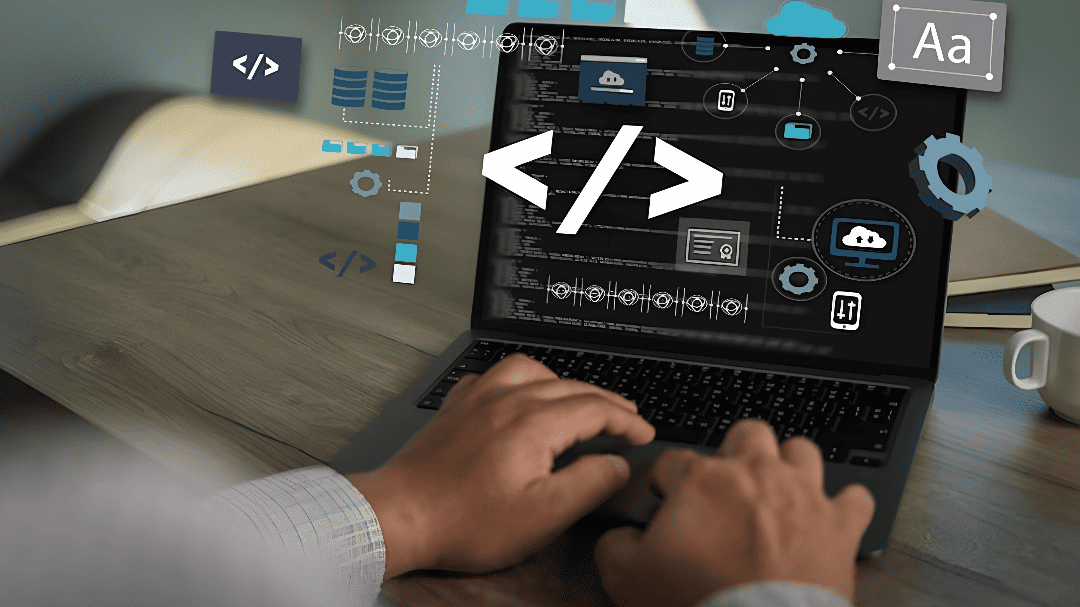The way developers connect intelligent systems to their everyday tools is changing quickly. The Model Context Protocol (MCP) has emerged as a new standard for interoperability and has already been adopted by major players across the industry. Microsoft has even described MCP as the "USB-C for applications," integrating it into Windows so that agents can securely access files, APIs, and workflows directly from the desktop.
For developers, this shift is more than a technical upgrade. MCP servers make it possible to link Claude Code with tools like GitHub, Sentry, and Figma without complex manual setups. Developers are already running MCP servers that allow Claude to raise pull requests, manage error logs, and fetch documentation through simple prompts.
This blog will walk you through everything you need to know about configuring Claude Code MCP tools for better integration, covering setup methods, code snippets, troubleshooting tips, and best practices. By the end, you will see why MCP is becoming an essential part of modern development workflows.
Key Takeaways
- MCP servers let you connect Claude Code to essential tools like GitHub, Figma, Notion, and Sentry, making your workflows more seamless and reducing the need to switch between apps.
- You can configure MCP servers using CLI commands or JSON, giving you flexibility for simple setups or more complex, automated workflows.
- Adjusting MCP settings for development versus production environments keeps your integrations stable and efficient, no matter where you’re working.
- Following security, compliance, and testing best practices ensures your MCP setup is safe, reliable, and ready for real-world usage.
What is MCP?
The Model Context Protocol (MCP) is an open standard that allows applications like Claude Code to connect directly with external tools and data sources. Instead of writing custom scripts or juggling multiple APIs, MCP provides a consistent way for an intelligent agent to communicate with services such as GitHub, Sentry, or cloud platforms. Think of it as a common language that bridges Claude Code with the tools developers rely on every day.
How does it help?
For developers, MCP removes a lot of the manual overhead in managing integrations. Teams no longer need to switch between terminals, dashboards, or browser tabs to check logs, raise pull requests, or fetch documentation. With MCP servers running in the background, these actions can be handled directly within Claude Code.
For organizations, the benefit is scale. Enterprises that use multiple collaboration, monitoring, and infrastructure tools can centralize interactions through Claude Code instead of maintaining separate integration pipelines. This leads to fewer context switches, less repetitive setup work, and more time for focused problem-solving.
Now that we’ve covered what MCP is, the next step is to understand why proper configuration matters. Setting things up correctly is what turns MCP from a helpful protocol into a powerful driver of productivity and collaboration.
The Importance of Configuring MCP Tools
Setting up MCP tools in Claude Code is not just about keeping up with a new standard. It directly impacts how developers and teams work every day. Here's why it matters:
1. Access to tools without friction
Once configured, MCP servers connect Claude Code with services like GitHub, Sentry, or Figma instantly. Instead of juggling multiple tabs or writing one-off scripts, developers can trigger actions such as raising a pull request or checking an error log through simple prompts inside their coding environment.
2. Automating repetitive workflows
Tasks that usually demand constant switching between dashboards can be streamlined. For example, an MCP server linked to Sentry can surface error reports in real time, while a GitHub server can help manage branches and PRs. The result is less manual effort and faster response times.
3. Boosting productivity and collaboration
By keeping development, monitoring, and documentation in one place, MCP reduces interruptions and keeps teams aligned. Designers can share files from Figma, project managers can pull notes from Notion, and developers can review logs without breaking their workflow.
4. Building for the future
MCP is not limited to Claude. Industry leaders like Anthropic, OpenAI, Microsoft, and Google are backing the protocol, making it clear that MCP will play a central role in how intelligent systems interact with tools. Configuring MCP tools today prepares teams for a future where these integrations become standard across platforms.
Configuring MCP tools isn’t just about setup; it’s about making sure developers can automate tasks, improve collaboration, and work more efficiently without constant context switching. To put this into practice, the next step is exploring some of the most popular MCP servers that you can connect with Claude Code to expand its functionality.
Popular MCP Servers You Can Use with Claude Code

Once you've set up MCP in Claude Code, the next step is choosing which servers to connect. Below are some widely used options, organized by category. These examples give you a starting point, but always verify the source before installing.
1- Development & Testing
- Sentry – Capture and troubleshoot production errors without leaving your editor.
Example command: claude mcp add --transport http sentry https://mcp.sentry.dev/mcp
- Socket – Scan dependencies for vulnerabilities.
Example command: claude mcp add --transport http socket https://mcp.socket.dev/
- Hugging Face – Pull models, datasets, and Gradio apps straight from Hugging Face Hub.
Example command: claude mcp add --transport http hugging-face https://huggingface.co/mcp
2- Project Management & Documentation
- Asana – Keep tasks and projects in sync with your coding work.
Example command: claude mcp add --transport sse asana https://mcp.asana.com/sse
- Notion – Update pages or fetch docs right inside Claude.
Example command: claude mcp add --transport http notion https://mcp.notion.com/mcp
- Linear – Manage issues and roadmaps seamlessly.
Example command: claude mcp add --transport sse linear https://mcp.linear.app/sse
3- Payments & Commerce
- Stripe – Handle subscriptions, invoices, and transactions.
Example command: claude mcp add --transport http stripe
https://mcp.stripe.com
- Square – Manage orders, inventory, and checkout flows.
Example command: claude mcp add --transport sse square
https://mcp.squareup.com/sse
- PayPal – Integrate online payment workflows.
Example command: claude mcp add --transport http paypal
https://mcp.paypal.com/mcp
4- Design & Media
- Figma – Export assets or query design files.
Example command: claude mcp add --transport http figma-dev-mode-mcp-server
http://127.0.0.1:3845/mcp
- Canva – Generate and edit visuals without context switching. Upload, optimize, and manage images or videos.
Example command: claude mcp add --transport http canva
https://mcp.canva.com/mcp
- Cloudinary – Upload, optimize, and manage images or videos.
Example command: claude mcp add --transport http cloudinary
https://mcp.cloudinary.com/mcp
5- Infrastructure & DevOps
- Vercel – Review deployment logs and manage projects in one place.
Example command: claude mcp add --transport http vercel
https://mcp.vercel.com/
- Netlify – Deploy new builds or tweak site settings directly.
Example command: claude mcp add --transport http netlify
https://netlify-mcp.netlify.app/mcp
These popular MCP servers provide a solid starting point, but your ideal setup will depend on your project needs, team workflows, and the tools you use most frequently. Always review server documentation and security guidelines before connecting them to Claude Code.
Once you’ve identified the right servers for your workflow, the next step is learning how to configure them inside Claude Code so they work reliably across your projects.
How to Configure MCP Servers in Claude Code?
Configuring MCP servers in Claude Code can be done in a few different ways, depending on whether you want something running locally or connecting out to a cloud service. Below are the three main approaches, along with examples.
Option 1: Local stdio servers
These run directly on your machine as local processes, making them useful for scripts or tools that need system-level access.
General syntax
claude mcp add <name> <command> [args...]
Example: adding Airtable
claude mcp add airtable --env AIRTABLE_API_KEY=YOUR_KEY \
-- npx -y airtable-mcp-server
Notice the use of -- (double dash). This tells Claude where its own flags stop and where the server's command begins.
- Everything before -- belongs to Claude (like --env or --scope).
- Everything after -- is the actual process to run.
Examples
claude mcp add myserver -- npx server
claude mcp add myserver --env KEY=value -- python server.py --port 8080
This avoids conflicts between Claude's flags and the server's arguments.
Option 2: Remote SSE servers
Some MCP servers use SSE (Server-Sent Events) to stream real-time data, which is common for dashboards and live updates.
General syntax
claude mcp add --transport sse <name> <url>
Example: Linear integration
claude mcp add --transport sse linear https://mcp.linear.app/sse
Example with API key authentication
claude mcp add --transport sse private-api https://api.company.com/mcp \
--header "X-API-Key: your-key-here"
Option 3: Remote HTTP servers
For APIs that follow a request/response model, the HTTP transport is the way to go.
General syntax
claude mcp add --transport http <name> <url>
Example: Notion integration
claude mcp add --transport http notion https://mcp.notion.com/mcp
Example with bearer token
claude mcp add --transport http secure-api https://api.example.com/mcp \
--header "Authorization: Bearer your-token"
By choosing the right type of MCP server and correctly configuring its commands and authentication, you can ensure smooth integration and reliable communication between Claude Code and your essential tools. Once the setup is complete, the next step is knowing how to manage these servers effectively so they remain secure, efficient, and easy to maintain.
How Do You Manage Your MCP Servers?
Once installed, you'll want to check, update, or remove servers as needed.
# See all servers
claude mcp list
# Inspect details of a server
claude mcp get github
# Remove a server
claude mcp remove github
# Check server status from within Claude Code
/mcp
Extra Tips
- Use --scope to control where configs are stored:
- local (default): only in your current setup
- project: shared in .mcp.json
- user: available across all projects
- Set environment variables with --env (e.g., --env KEY=value).
- Adjust startup timeouts with MCP_TIMEOUT (e.g., MCP_TIMEOUT=10000).
- Increase output token limits with MAX_MCP_OUTPUT_TOKENS.
- Use /mcp for OAuth 2.0 authentication with supported servers.
- Windows tip: If you're running a local server that uses npx, you may need cmd /c for it to execute properly.
Example
claude mcp add my-server -- cmd /c npx -y @some/package
Without cmd /c, you may see connection errors, since Windows cannot directly execute npx in this context.
Once you know how to manage your MCP servers, the next step is exploring the different ways you can configure them. This gives you more flexibility and control over how Claude Code interacts with your tools.
Approaches to MCP Configuration
When setting up MCP servers in Claude Code, you have two main ways to configure them: through the command line or by working directly with JSON files. Each option has its strengths, and the right choice depends on how much control or automation you need.
1. Command-Line Configuration
Best for: quick setup, testing, or one-time configurations
- Key commands:
- Add a server
claude mcp add <name> <command> - List all servers
claude mcp list - View server details
claude mcp get <name> - Remove a server
claude mcp remove <name>
- Add a server
2. JSON-Based Configuration
Best for: automation, team projects, and reusing configurations
Key command:
claude mcp add-json --scope=user my-server '{
"command": "/path/to/server",
"args": ["--flag"],
"env": { "API_KEY": "your-key" }
}'
Where Configurations Are Stored?
Claude Code saves your server definitions in simple JSON files. Depending on the scope, they're placed in different locations:
- User scope: ~/.claude.json (available across all projects for your account)
- Project scope: .mcp.json (stored at the root of your project and shareable with your team)
You can edit these files directly if you prefer manual control or need to make quick adjustments.
Choosing Between CLI and JSON
- CLI wizard: Best for quick setups, experiments, or when you're just testing a tool.
- JSON method: Better for automation, team sharing, or maintaining consistent environments across machines.
By understanding both command-line and JSON-based approaches, you can choose the method that best fits your workflow, whether it’s fast experimentation, team collaboration, or automated deployments. Once you’re clear on how to manage servers, the next step is knowing where those configurations live, which is where installation scopes come into play.
What Are MCP Installation Scopes?

When setting up MCP servers in Claude Code, you can choose from three different scope levels. Each scope defines how a server is stored, accessed, and shared. Picking the right scope ensures smooth collaboration, proper security, and easier server management.
Local Scope
Local servers are tied to a single project and stored in user-specific settings. They remain private and only work when you're inside that project's directory. This setup is best for experimental builds, testing, or any configuration that contains sensitive credentials.
# Add a local server (default)
claude mcp add my-private-server /path/to/server
# Explicitly set to local scope
claude mcp add my-private-server --scope local /path/to/server
Project Scope
Project-scoped servers live inside a .mcp.json file at the project root. Because this file can be checked into version control, every team member working on the project can access the same tools and services. Claude Code automatically generates or updates this file when you add a server under this scope.
# Add a project-scoped server
claude mcp add shared-server --scope project /path/to/server
A sample .mcp.json might look like this:
{
"mcpServers": {
"shared-server": {
"command": "/path/to/server",
"args": [],
"env": {}
}
}
}
For security, Claude Code always asks for confirmation before using project-scoped servers. If you want to clear previous approvals, you can run:
claude mcp reset-project-choices
User Scope
User servers are accessible across all projects on your machine but remain private to your user account. They're perfect for personal utilities or tools you rely on regularly, regardless of which project you're working on.
# Add a user-scoped server
claude mcp add my-user-server --scope user /path/to/server
How to Decide Which Scope to Use?
- Local scope: For personal experiments, testing, or sensitive setups.
- Project scope: For shared team environments and project-specific tools.
- User scope: For utilities and services you need in multiple projects.
Once you’ve determined the right installation scope for your MCP servers, it’s equally important to ensure they operate securely and reliably. Implementing proper security measures, compliance protocols, and testing strategies helps maintain a stable and safe integration environment.
Security, Compliance, and Testing Best Practices
When setting up Claude Code MCP, it's not just about making it work, it's about making it safe, reliable, and compliant. A strong approach ensures secure data handling, meets industry requirements, and confirms your setup works as expected in real-world conditions.
Implementing Security Protocols within Claude Code MCP
- Authentication & Authorization: Use API keys, OAuth, or token-based authentication to prevent unauthorized access.
- Environment Variables for Secrets: Never hardcode credentials. Store API keys, tokens, and sensitive configs in .env files or a secure secrets manager.
- Data Encryption: Ensure all data exchanged between Claude Code MCP and external services uses TLS/HTTPS.
- Least Privilege Principle: Give MCP servers only the access they truly need (e.g., read-only vs. write access).
- Logging & Monitoring: Keep activity logs but avoid storing sensitive details in plain text.
Adhering to Compliance Standards During Integration
- GDPR & Data Privacy: If handling user data, ensure clear consent and avoid storing unnecessary personal information.
- Industry-Specific Regulations: For finance, healthcare, or government use cases, configure servers to meet standards like PCI-DSS or HIPAA.
- Audit Trails: Maintain proper logs and documentation of integration changes to pass audits smoothly.
By following these practices, you ensure that your MCP setup is not only functional but also secure, compliant, and resilient, giving your team confidence as you scale integrations and workflows.
With a secure and validated setup in place, it’s equally important to know how to identify and resolve any issues that may arise. Let’s look at common MCP configuration challenges and how to handle them effectively.
How to Handle MCP Configuration Issues?
Even with a solid setup, developers may face hiccups when working with Claude Code MCP. Knowing the common problems and their fixes saves hours of debugging.
1. Server Connection Failures
Symptoms: MCP server not showing up in claude mcp list, timeouts when connecting.
- Fixes:
- Double-check that the server is running and accessible at the correct host/port.
- Verify firewall or proxy rules aren't blocking requests.
- Run claude mcp get <server-name> to confirm server details.
2. Authentication or Permission Errors
Symptoms: Unauthorized errors, failed API calls, or limited access to resources.
- Fixes:
- Ensure API keys, tokens, or credentials are stored correctly in environment variables.
- Rotate expired tokens and confirm scopes/roles have sufficient permissions.
- Apply the principle of least privilege, but validate that necessary access exists.
3. Misconfigured JSON Files
Symptoms: Errors during claude mcp add-json or servers not appearing in the user/project scope.
- Fixes:
- Validate JSON syntax with a linter or jq . file.json.
- Check for missing commas, incorrect nesting, or typos in config fields.
- Ensure the file is placed in the correct scope (~/.claude.json or .mcp.json).
4. API Endpoint or Data Exchange Issues
Symptoms: Requests sent, but responses are incorrect, delayed, or malformed.
- Fixes:
- Test the API independently with Postman or cURL before adding it to MCP.
- Confirm endpoint URLs and payload formats match the external system's expectations.
- Inspect Claude Code logs to spot parsing or schema errors.
5. Performance Bottlenecks
Symptoms: High latency, slow responses, or MCP servers consuming excessive resources.
- Fixes:
- Run load tests to identify breaking points.
- Scale services or optimize API calls (e.g., batching requests).
- Use monitoring tools to track resource consumption.
By proactively following these troubleshooting steps and validating your configurations, you can minimize downtime, ensure smooth MCP server operation, and maintain a reliable integration workflow across all your projects.
Wrapping Up
Configuring MCP tools in Claude Code isn't just about setup; it's about creating a workflow that's faster, more secure, and easier to maintain across projects. From installing servers and choosing the right scope to fine-tuning configurations for development and production, each step ensures that your tools work exactly the way your team needs.
As MCP adoption continues to grow among platforms like Anthropic, OpenAI, and Microsoft, investing time in proper configuration now sets you up for smoother integrations in the future. Whether you're connecting to project management apps, monitoring tools, or cloud services, the goal is the same: less context switching, more productivity.
By following the approaches and best practices we covered, you'll be ready to build a setup that supports both experimentation and long-term stability. The next step? Start small with a local server, test your integrations, and scale toward production with confidence.
FAQs
1. What is the main purpose of configuring MCP servers in Claude Code?
MCP servers act as connectors between Claude Code and external tools or services. Proper configuration ensures smoother integrations, better automation, and less manual context switching for developers.
2. Can I use the same MCP configuration for both development and production?
You can, but it's not recommended. Development setups often use verbose logging and test servers, while production requires stricter authentication, longer timeouts, and stable configurations.
3. Are third-party MCP servers safe to use?
Not all of them. Since Anthropic has not verified every third-party server, you should only install servers from sources you trust. Be cautious with servers that fetch untrusted content, as they may expose you to security risks like prompt injection.
4. How do I know if my MCP server is running correctly?
You can check the status inside Claude Code using the /mcp command, or run:
claude mcp list
claude mcp get <server-name>
These commands let you confirm whether the server is installed and responding properly.
5. What should I do if my MCP server keeps disconnecting?
Common fixes include increasing the MCP_TIMEOUT value, checking for correct authentication headers, and ensuring Windows users run local servers with cmd /c when using npx. If problems persist, re-add the server with the correct environment variables.


.gif)
.png)



